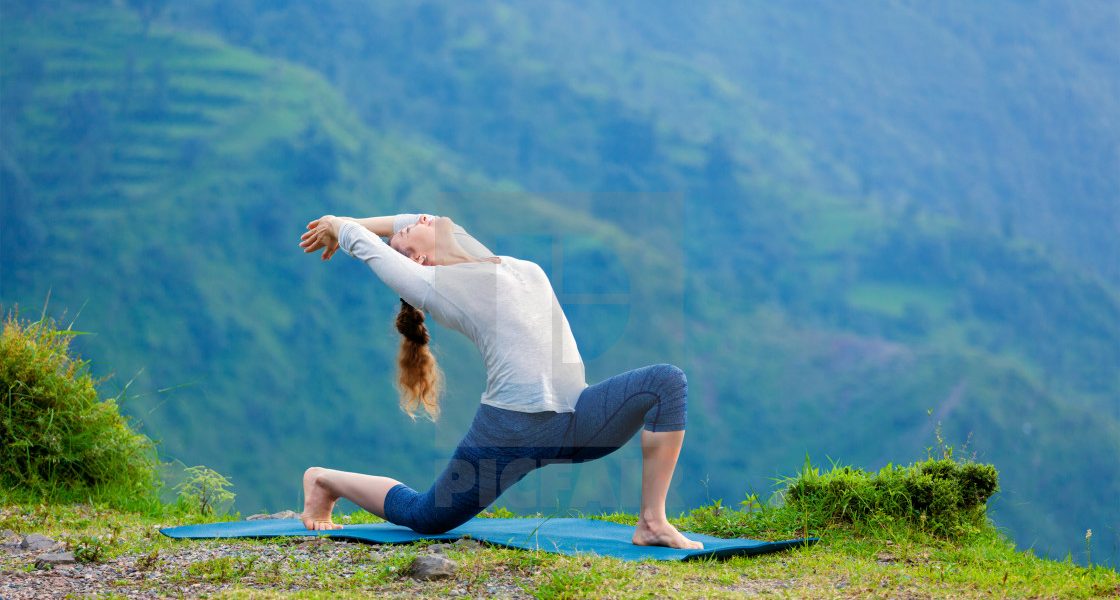The practice of physical postures is called Asana. It is the most commonly known aspect of yoga for those unfamiliar with the other seven limbs. The verbal meaning of ‘Asana’ is staying or abiding. Asana is one way in which a person can experience the unity of body and mind. Asana is defined as that which is comfortable and easy, as well as firm. In the west, asana is commonly called “posture”. Yogic postures (asanas) are prescribed for the purpose of comfort and firmness during meditation and the practice of pranayama. An upright seated posture in which one can sit with comfort and no need to move is ideal for meditation.
Asana is a dynamic position, in which the practitioner is perfectly poised between activity and non-activity. There is a corresponding mental balance between movement and stillness. Indeed, Patanjali teaches that each posture reflects a mental attitude, whether that attitude be one of surrender, as in a forward-bending asana, or the strengthening of the will, through backward-bending postures, or the creation of a physical prayer with the body, as in the practice of Padmasana, the well-known lotus posture.
Yoga Sutra says that when we master asanas we are able to handle opposites. To be able to handle opposites does not mean going outside naked in winter or dressing in warm woolen clothing in summer. It means that we become more sensitive. We learn to adapt because we know our body better. We know how our body reacts in different situations.
Practically speaking, we should be able to stand for a few minutes with ease; we should be able to sit for a while easily as well. One advantage of asana practice is that it helps us get used to different situations and be able to cope with different demands. If we want to practice pranayama, for example, we have to be able to sit comfortably erect for a period of time. Asanas help us focus on the breath rather than the body during pranayama practice. If we can sit comfortably and effortlessly erect there is nothing to distract us from our concentration on the breath.
Asana is a two-way street. Once the mental attitude has been created, it can then be spontaneously expressed as an asana; if one takes on the external form of an internal attitude, soon that attitude moves through body into mind, thus creating it there. Whichever way one works, the results are the same. Asana is thus both a preparation for meditation and a meditation sufficient in and of itself.
Another advantage of asana is that it is direct. It can temporarily bring peace and quiet the mind. This quieting encourages the balancing of the mental functions of the individual, since it allows the intuitive aspects of the mind to have free play. This soothing effect on the brain has been verified by EEG data of brain during meditation. It has great healing implications.
Patanjali suggests that the asana and the pranayama practices will bring about the desired state of health; the control of breath and bodily posture will harmonize the flow of energy in the organism, thus creating a fertile field for the evolution of the spirit.


